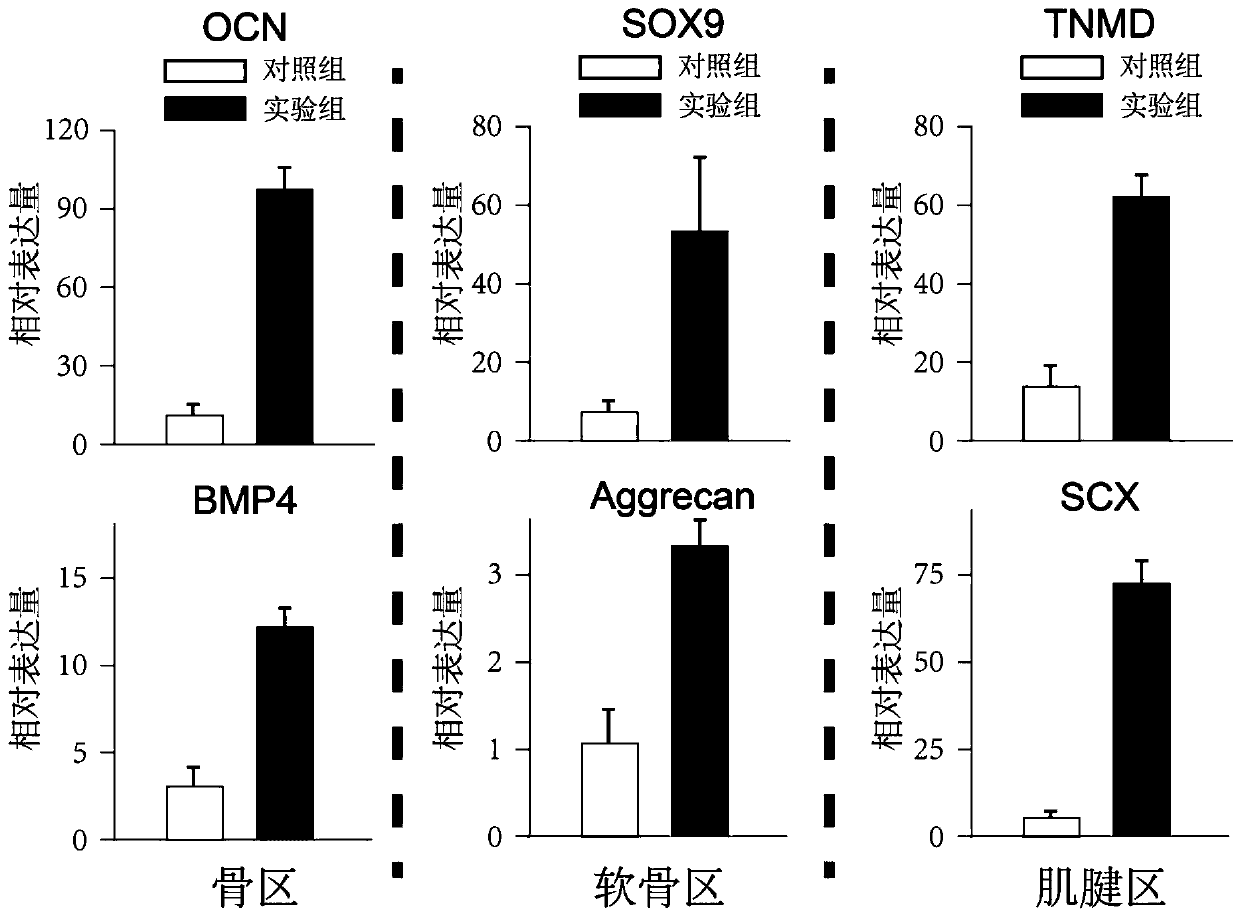Tendon-bone combined three-phase scaffold prepared by fusion electrospinning three-dimensional printing
A technology of 3D printing and fused static electricity, which is applied in the medical field, can solve problems such as easy tissue fracture, failure to restore gradient structure, and inability of fibrous scar tissue to effectively disperse stress, so as to promote cell proliferation and repair, facilitate tendon-bone joint repair and Restoration of normal function, high precision effect
- Summary
- Abstract
- Description
- Claims
- Application Information
AI Technical Summary
Problems solved by technology
Method used
Image
Examples
Embodiment 1
[0025] The present invention provides the following technical solutions: tendon-bone joint three-phase scaffold prepared by melt electrospinning three-dimensional printing, the specific examples are as follows:
[0026] Specifically, tendon stem cells are cultured in an incubator with DMEM medium containing 10% fetal bovine serum, chondrocytes are cultured in an incubator with F12 medium containing 10% fetal bovine serum, and bone marrow stem cells are cultured in a medium containing 10% fetal bovine serum. , connective tissue growth factor CTGF 25ng / ml, ascorbic acid 25uM α-MEM medium cultured in the incubator.
[0027] Specifically, a three-dimensional printing software is used to establish a printing model, which is in the shape of a multi-layer rectangle, and the path gaps of the tendon area, cartilage area, and bone area are adjusted and saved according to needs.
[0028] Specifically, appropriate amounts of biopolymer materials A1, A2, and A3, and microspheres B1, B2, an...
Embodiment 2
[0031] Corresponding cells were planted in each area of the obtained three-phase integrated scaffold, and cultured in an incubator. Tendon stem cells, chondrocytes, and bone marrow stem cells were implanted in the scaffolds obtained by three-dimensional printing of pure polycaprolactone as the control group, respectively. Each area of the scaffold was compared. After culturing for 1, 3, 5, and 7 days respectively, the tenocyte viability in the tendon scaffold was detected by MTT method. The detection results were as follows: figure 1 As shown, the cells on the scaffold obtained by the melt electrospinning three-dimensional printing technology with cytokine microspheres have good proliferation behavior, and the cell viability is better, and the proliferation behavior is more significant than that of the control group.
Embodiment 3
[0033] The obtained three-phase integrated scaffold was planted with corresponding cells in each area, and the qRT-PCR test was performed. The scaffolds obtained by three-dimensional printing of polycaprolactone were respectively planted with tendon stem cells, chondrocytes, and bone marrow stem cells as a control group, and cultured separately. After 7 days, qRT-PCR detection was carried out, and the detection results were as follows: figure 2 As shown, the expression of tendon-related products (SCX, TNMD) in the tendon region, cartilage-related products (SOX9, Aggrecan) in the cartilage region, and bone-related products (OCN, BMP4) in the bone region in the experimental group were significantly higher.
PUM
 Login to View More
Login to View More Abstract
Description
Claims
Application Information
 Login to View More
Login to View More - R&D
- Intellectual Property
- Life Sciences
- Materials
- Tech Scout
- Unparalleled Data Quality
- Higher Quality Content
- 60% Fewer Hallucinations
Browse by: Latest US Patents, China's latest patents, Technical Efficacy Thesaurus, Application Domain, Technology Topic, Popular Technical Reports.
© 2025 PatSnap. All rights reserved.Legal|Privacy policy|Modern Slavery Act Transparency Statement|Sitemap|About US| Contact US: help@patsnap.com



